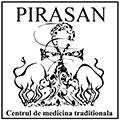Atherosclerosis is a disorder of the cardio-vascular system defined by depositions of adipose elements, calcium, cholesterol and other blood elements or dead cells on the internal arterial walls, which cause severe complications jeopardizing the patient’s life: myocardial infarction, cerebral vascular accident, aneurysm, arteriosclerosis obliterans etc.
Atherosclerosis has a slow and stealthy development, over many years and onset in childhood. In most of the cases, the first symptom only occurs when an artery is obstructed. Between 10 to 30 years may elapse from the onset of the disease to the first signs of stenosis and arterial thrombosis.
The depositions of arterial endotelium give birth to ateromatous plaques in time or ateroms obstructing the respective artery and cutting off the circulation of oxygenated blood towards the organ perfused by the affected artery.
Depending on the affected artery, there are different cardio-vascular disorders revealing the specialist physician, among other things, the artery obstruction:
-
coronary diseases (the ateroms are born in the coronary arteries, arteries supplying the heart with oxygenated blood; the ischemia of the cardiac muscle will cause angina pectoris; it also poses risk of myocardial infarction);
-
diseases of the carotid (the ateroms are formed in the carotid, artery supplying the cerebral area with oxygenated blood; it poses risk of cerebral hypo-oxygenation, cerebral vascular accident or cerebral aneurism)
-
arteriosclerosis obliterans (it occurs when the ateroms are formed in the arteries of the legs, hands or pelvis; cutting off the blood flow towards these areas causes muscular pains (intermittent claudication), uneasy gait, numbness and tingling in the affected limb; it poses risk of infection and gangrene if circulation is not restored.
In certain situations, the ateroms grow into blood clots. When the blood clots obstruct the coronary, pulmonary or carotid arteries, occur myocardial infarction, pulmonary emboly or cerebral vascular accident. Where the arteries irrigating the muscles of the lower limbs or of the upper limbs (which is a more rare case) are obstructed, occur both arteriosclerosis obliterans and progressive ischemia of the affected limb. Where the renal arteries are obstructed, occur specific renal disorders as well as renal artery stenosis.
The aterom formation process is biased by the presence of certain risk factors, such as: diabetes mellitus, obesity, hypertension, smoking, excessive sedentarity, alcohol abuse, a high level of bad cholesterol in blood, genetic predisposition etc.
Treatment
Restoration of blood circulation in the affected tissues requires elimination of aterom plaques and/or of thrombi. The depositions in the aterom plaques will be dissolved and eliminated from the body by increasing artery oxygenation and by pumping a massive supply of energy into the arterial circuit. The energy flow will resorb the existing deposits. The blood clots detached from the aterom plaques are resorbed by similar procedures. However, the doctor will also take action to prevent their migration, in order to avoid birth of pulmonary, cerebral or cardiac thromboses.
The treatment also works upon the ischemic lesions occured in the organs irrigated by the obstructed arteries. In order to achieve it, those acuppoints are stimulated that coordinate the processes of regeneration of the organs or of the ischemic tissue areas. The medicinal herbs used in the treatment speed up the regeneration processes, taking part especially in the elimination of the dead cells from the ischemic areas.

